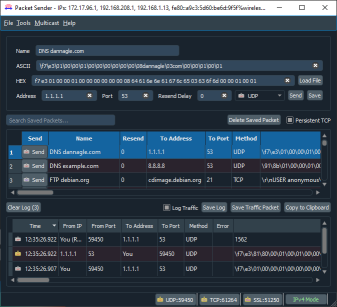


I searched https as a string, changed them to http, and re-zipped the xap file.
#PACKET SENDER X0A CODE#
Net reflector to see the real decompiled source code of applications. There were some packets which seem to be TCP protocol but I focused on the HTTP communication. Of course, the network between application and server was encrypted using https. Packet Analysisīefore I did the static analysis, I used Windows mobile phone emulator for the packet analysis. Now, I knew LINE uses Thrift library for network communication, which is not their own protocol, so I thought it might be easy to implement LINE chat system (compare to LOCO protocol). After I searched Google for a moment, I found that Thrift is an open source project for cross-language service built by Apache. And also, I could see ‘Thrift.dll’ which is the library for Thrift framework. The first thing that attracted me was ‘Line.dll’ file and I guessed it may have core functions for the chat protocol. The latest version of windows LINE application is 2.7.0.155. My final goal is to implement the LINE protocol in python, especially sending and receiving messages.įirst of all, I needed a xap file of LINE windows mobile application, so I searched it on Google.įinally, I found the old version of LINE xap file (version : 1.7.0.71). So, I decided to analyze the protocol of LINE and I’ll record the steps that I followed in this post. LINE is not popular in Korea, but media currently said that LINE is one of the most popular messaging app in Japan. Like KakaoTalk, LINE is the instant messaging application on smartphones and PCs. If you need a python code right away, then please keep in touch with Īfter I analyzed LOCO protocol of KakaoTalk, I’ve been curious about the operation of other messaging applications.


 0 kommentar(er)
0 kommentar(er)
